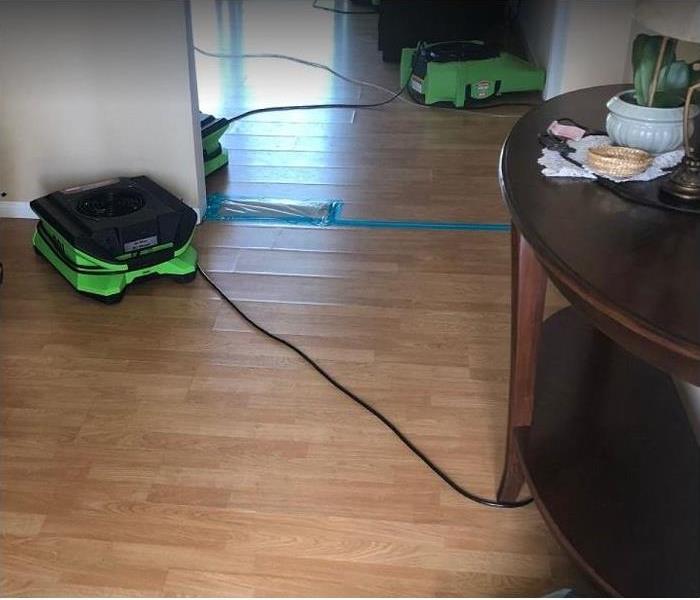We are the Best Choice in Covina After Water Damage
11/16/2021 (Permalink)
Water Damage to Your Hardwood Floors in Covina
Having your living room hardwood floors soaked by a water leak from a nearby bathroom may cause a mild panic attack for any homeowner. Chances are you took a lot of time and effort choosing just the right floors for your California home and having your mind jump to the worst possible conclusion of having to replace them causes anxiety.
With proper care and treatment, the water damage sustained by your Covina flooring may not mean the end of your beautiful hardwood. By controlling airflow, humidity, and temperature, SERVPRO technicians may be able to mitigate further damage such as warped flooring or the growth of mold infestations.
Restorers first address any remaining surface water impacting the hardwood floors by extracting the liquid found on the surface of the material. If there are minimal amounts of standing water, restorers use portable extraction equipment, including long wands, to remove the water from even the hardest to reach places. Any remaining moisture evaporates quickly off of the surface of the wood with the use of warm, dry air.
Water Damage Restoration
Next, the SERVPRO technicians take care of the free water absorbed into the floors. Free water has not yet chemically bonded with the wood molecules in the flooring. As the surface water damage comes out of the wood through extraction, the free water migrates through capillary suction toward the top of the surface. Free water is more challenging to remove than surface water; however, it can be done through the use of air movers that create airflow across the wet flooring. To be the most effective, technicians use higher air temperature and a lower humidity ratio through the use of dehumidifiers.
Bound water is the moisture that is absorbed into the wood flooring and then chemically bound itself with the wood molecules. For bound water to effectively leave the flooring, technicians heat the material with portable heaters. By placing drying mats to create suction, this liquid can then be forced up to be released as water or vapor. Polyethylene sheeting can be placed over sections, large or small, of the hardwood boards to focus the forced drying and evaporation to a specifically targeted area. This method can also pull bonded or free water out of the underpinnings in a crawlspace home to mitigate secondary water damage through rotting or mold infestations. At this point, the bound water becomes free water, and the process continues until the floor is dry.
For assistance dealing with water damage, contact SERVPRO of Azusa / Covina at (626) 387-4111

 24/7 Emergency Service
24/7 Emergency Service
